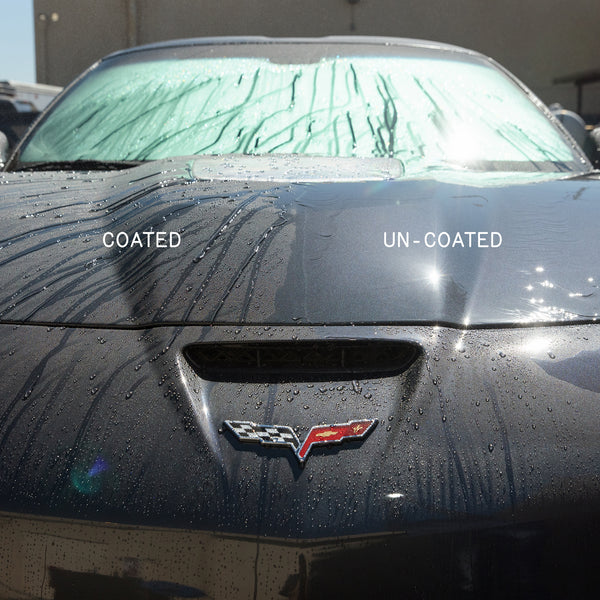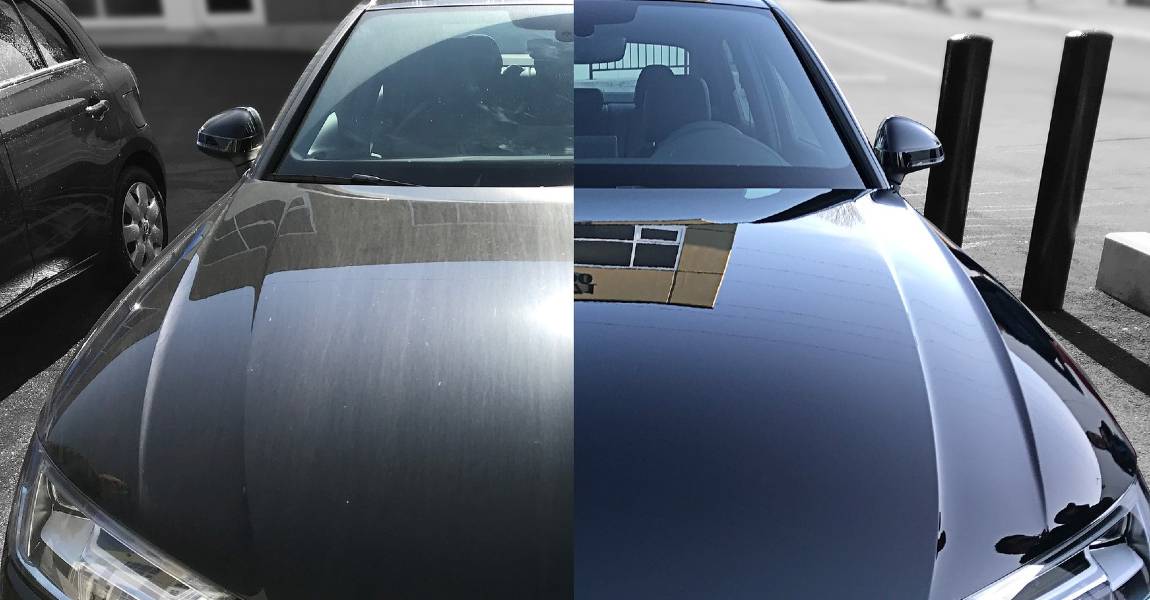Contrasting Various Sorts Of Ceramic Coatings for Optimum Outcomes
Wiki Article
Just How Ceramic Coating Improves the Durability of Your Auto's Finish
Ceramic coating has actually arised as a pivotal technology in auto treatment, using a considerable enhancement to the longevity of a vehicle's coating. By creating a robust, semi-permanent bond with the factory paint, ceramic coatings supply a formidable obstacle against ecological risks, including UV rays and chemical impurities.What Is Ceramic Coating?
Ceramic coating is an advanced protective option that boosts the durability and appearance of automobile surface areas. This sophisticated modern technology involves the application of a liquid polymer that chemically bonds with the factory paint, producing a resilient layer of security. Unlike conventional wax or sealers, which give only short-lived advantages, ceramic coatings use durable durability against environmental impurities and physical wear.
The primary component of ceramic coatings is silica, which creates a solid bond with the vehicle's surface area. This results in a hydrophobic effect, creating grime, water, and dirt to grain off conveniently. Additionally, the coating supplies UV protection, decreasing the danger of oxidation and fading brought on by long term sun exposure. Consequently, automobiles treated with ceramic layers maintain their visual charm gradually.
Application of ceramic coating requires precise preparation, consisting of complete cleaning and decontamination of the vehicle's surface to guarantee optimal attachment. Once applied, the coating treatments to create a semi-permanent shield that can last for numerous years when correctly preserved. This innovative solution represents a substantial development in automobile treatment, offering a superior option to conventional techniques of surface protection.
Benefits of Ceramic Coating
Among the most considerable benefits of applying ceramic coating to an automobile is the enhanced security it offers against environmental damage. This sophisticated protective layer serves as a formidable obstacle against damaging aspects such as UV rays, bird droppings, tree sap, and acid rain, which can lead to fading, etching, and deterioration of the car's paintwork.Along with securing against ecological risks, ceramic coating substantially reduces the regularity of describing and washing. Its hydrophobic residential or commercial properties repel water and dust, permitting contaminants to move off even more easily, resulting in a cleaner surface area for a longer period. This not only saves effort and time however additionally minimizes the damage connected with regular washing.
In addition, ceramic coating offers a high-gloss coating that enhances the car's appearance, giving it a showroom radiate that lasts. This visual advantage is matched by a rise in resale worth, as a well-maintained outside usually translates to a much more attractive deal on the marketplace.
Inevitably, the benefits of ceramic coating extend past simple visual appeals, using useful options for lasting lorry care and preservation.
Exactly How Ceramic Coating Functions
At its core, ceramic coating functions with a chemical bonding process that integrates with the vehicle's factory paint. This innovative coating includes nanoparticles, commonly made from silicon dioxide (SiO2), which create a robust and durable layer on the surface area of the paint. When used, the ceramic coating passes through the tiny pores of the lorry's surface area, forming a semi-permanent bond that improves the paint's protective high qualities.The result is an ultra-thin, hydrophobic layer that drives away water and pollutants, making it harder for dirt, crud, and various other ecological contaminants to abide by the surface area. This feature not just streamlines upkeep, as washing becomes a lot more effective, but also lowers the risk of scrapes and swirl marks that can mar the coating gradually.
Additionally, ceramic finishes supply UV security, shielding the paint from damaging sunlight exposure that find out here can lead to oxidation and fading. The chemical make-up of the coating makes certain that it continues to be intact under various climate problems, adding to the durability of the vehicle's surface. In general, the application of ceramic coating is an aggressive step that strengthens and preserves the visual appeal of a lorry for several years to come.
Contrast With Standard Wax
When thinking about automobile security options, comparing ceramic finishes to typical wax exposes substantial distinctions in efficiency and durability. Conventional wax, while giving a temporary luster and a layer of defense, commonly lasts just a couple of weeks to a few months, depending on environmental conditions and maintenance techniques. In contrast, ceramic have a peek here layers supply a much extra resilient remedy, lasting several years with correct treatment.

In addition, ceramic finishings supply a self-healing building that can fix small scrapes and swirl marks when revealed to warm. This is a function conventional wax can not provide. In general, while wax may be extra affordable and simpler to apply, the long-term advantages of ceramic finishes make them a premium choice for those seeking to maintain the stability and visual charm of their lorry's surface.
Upkeep Tips for Ceramic Coating
Proper upkeep is necessary to make certain the durability and performance of a ceramic coating. To start with, routine cleaning is crucial; make use of a pH-balanced car hair shampoo and microfiber towels to minimize scraping. Prevent automated auto washes that usage harsh brushes, as they can break down the coating with time.
Applying a top-up spray or maintenance product designed especially for ceramic layers can help rejuvenate the hydrophobic residential or commercial properties and improve luster (ceramic coatings). Stay clear of learn this here now making use of typical waxes or sealers, as they may conflict with the coating's efficiency
Finally, think about periodic expert inspections and upkeep by a detailer experienced with ceramic layers. They can examine the condition of the coating and provide customized treatment, additional extending its life and guaranteeing your lorry stays visually appealing for years ahead.
Verdict
In conclusion, ceramic coating offers as an effective option for boosting the durability of an automobile's coating. In general, the fostering of ceramic finishes represents a substantial advancement in vehicle treatment, ensuring optimum paint conservation for years.Ceramic coating has actually emerged as an essential innovation in automobile treatment, supplying a substantial enhancement to the longevity of a vehicle's coating. When used, the ceramic coating passes through the tiny pores of the car's surface area, developing a semi-permanent bond that enhances the paint's protective qualities.
When taking into consideration car security choices, contrasting ceramic layers to conventional wax reveals significant distinctions in efficiency and longevity.Ceramic layers form a solid chemical bond with the lorry's paint, developing a hydrophobic surface that drives away water, dirt, and impurities.In verdict, ceramic coating offers as an efficient service for improving the long life of an automobile's finish.
Report this wiki page